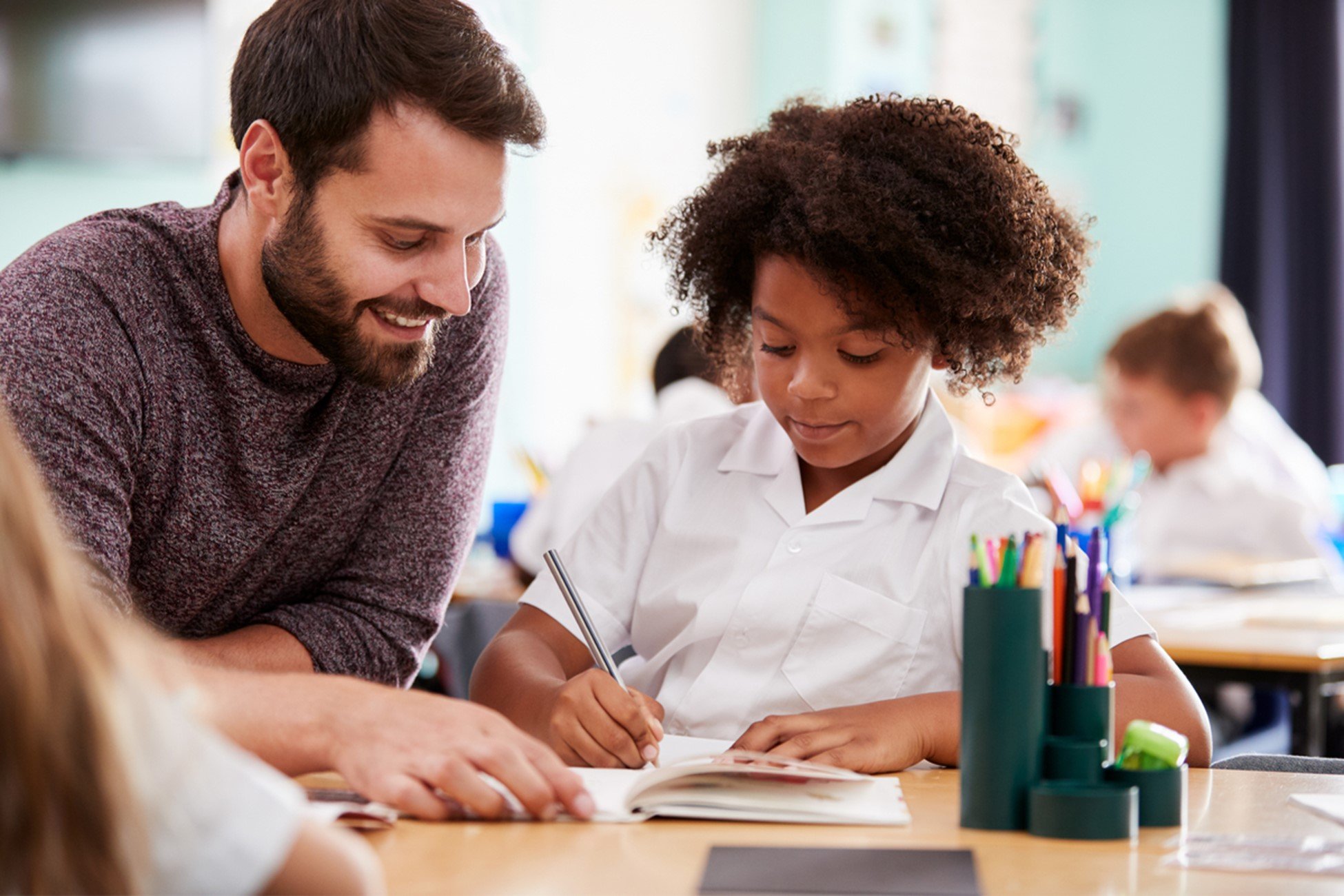How Teachers Can Improve Students’ Wellbeing Literacy (and the Impact It Has On Their Mental Health)
Research finds that positive education interventions bring beneficial effects on a student’s mental health. It can lead to improvements in life satisfaction and reduction of anxiety.
Andrew (not his real name) is a student at one of my Visible Wellbeing (VWB) Schools.
Prior to the teachers being trained in the VWB approach, Andrew was asked to talk about his character strengths. He struggled to list the positive aspects of his personality and instead focused on swimming and football.
10 months later, Andrew showed incredible improvement. And when asked the same question about his strengths, he was now able to respond with more confidence. He eagerly stated that he had teamwork, creativity, prudence, curiosity, and fairness as his top character strengths.
What’s more, when he was asked about how he feels every time he uses his character strengths, he replied:
“Well, when I’m using your character strengths I feel like I’m improving my wellbeing.”
Andrew is just one of the many students who showed improvement in wellbeing literacy after their teachers undertook the VWB training.
This article will focus on some of the key details of a study that my colleague, Mathew Higgins, and I recently published in the Journal of School and Educational Psychology. It’s a study on the impact of a teacher-based approach towards improving a student’s understanding of wellbeing and their wellbeing literacy.
Why The Study Was Conducted
Youth mental illness has reached alarming rates in the last two decades. The COVID-19 pandemic has further increased depression, anxiety, and PTSD (post-traumatic stress disorder) in young people.
Because of these findings, various international organisations have called on schools for help.
The World Health Organization (WHO), United Nations (UN), and UNESCO want schools to play a more active role in preventing youth distress. They’re calling for the active promotion of youth wellbeing.
How can schools respond to this call?
Through positive education interventions.
In the past decade, hundreds of research studies have consistently found that positive education interventions have a beneficial effect on a student’s mental wellbeing. These outcomes include an increase in positive emotions, self-esteem, emotional stability, coping abilities, life satisfaction, and even wellbeing literacy. At the same time, these interventions have also been shown to reduce depression, stress, and anxiety.
What the Teachers Did
All this research suggests one thing:
Positive education interventions are an effective approach to help schools improve the mental health of their students.
In fact, this is what Andrew’s school did. The school’s teachers went through training in the science and practice of positive education.
To be precise, the teachers participated in my Visible Wellbeing (VWB) program..
VWB is a pedagogical intervention I developed for teachers that is based on the science of positive education. The course trains teachers in a language, framework, and practices that build the wellbeing of students.
The framework that underpins the VWB intervention is the SEARCH framework. I’ve written about this framework in my earlier blogs. SEARCH is based on my published analysis of thousands of psychology studies. It identifies six pathways that can help students reach their full potential: Strengths, Emotional Management, Attention and Awareness, Relationships, Coping, and Habits and Goals.
For the study published in the Journal of School and Educational Psychology, we had teachers from three schools undertake a 3-hour training module for every one of the six SEARCH pathways. This was done over one school year to give teachers enough time to digest the learning from each training.
And as they went through the training modules, they were able to embed the SEARCH pathways into their classroom over time.
How?
The teachers used SEARCH-based activities to help their students learn the wellbeing language and skills.
The Results of the Study
To know if the teacher training had an impact on the students, we asked the students themselves.
In particular, we asked students before and after the training to define wellbeing for us.
We then coded their answers based on the SEARCH framework so it’s easier to show the improvement in wellbeing literacy. We added two additional coding categories: “General” and “Don’t know”.
“General” is for answers that use general terms to describe wellbeing (e.g. “Wellbeing is being well”, or “Wellbeing is about happiness”). “Don’t know” is for any indication that the student isn’t sure about the answer - like saying “Not sure” or “I couldn’t say.”
The result?
The Post-Intervention Showed Improvement in Wellbeing Literacy
Going back to Andrew’s case, you’ll notice how different his answers were before and after the intervention.
Prior to his teachers’ intervention, Andrew’s answers were unsure. But after the intervention, Andrew’s answer was more certain - it was delivered with confidence. And he was able to easily identify teamwork, creativity, prudence, curiosity, and fairness as his character strengths.
Best of all, it’s clear that Andrew understood how these strengths played a role in improving his wellbeing. Andrew’s answer is a good indication that the positive education intervention worked.
The results of other students in the psychology study showed the same trend. To be precise, the students showed an improved understanding of all six pathways. And the most noticeable improvementw were in the two pathways of coping and attention. What’s more, upon checking the “General” and “Don’t Know” responses, both showed a massive decrease following the Visible Wellbeing program being implemented.
So why is it important for students to understand their wellbeing?
It’s because it shows they now have a better emotional literacy.
In education contexts, teaching emotional literacy has been found to improve both interpersonal skills and self-confidence. Without a strong emotional literacy, students might find it harder to deal with psychological maladjustment, alcohol use, academic anxiety, and even somatic complaints like headaches and stomach troubles. But with high emotional literacy, students could develop a better ability to regulate distress caused by a stressful situation.
Ultimately, improved wellbeing literacy is beneficial to a student’s mental health.
Teachers Can Play a Role in Student Wellbeing
With the rise of mental health issues among young people, teachers are being asked to help improve students’ wellbeing.
It’s one of the reasons why I did my study. I wanted to understand how positive education interventions can help improve wellbeing literacy among students.
The results of the study showed that by training teachers to use the SEARCH framework via the VWB program, they can implement the new language and interventions in their classrooms, leading to a clear improvement in the student’s understanding of wellbeing.
In effect, giving students a better ability to deal with their mental health issues.
Would you like to know more about this?
Whenever you’re ready…
Here are three ways for you to dive deeper into my work on wellbeing and find a range of activities you can use in the classroom:
1) Join teachers from across the globe who have enrolled in the Visible Wellbeing Teacher Certificate for teachers, an on-demand course available.
2) Download the VWB e-Program with 180+ activities that you can deliver in remote/hybrid learning to support the wellbeing of students.
3) Use my strengths cards to help young children deepen their understanding of wellbeing.


